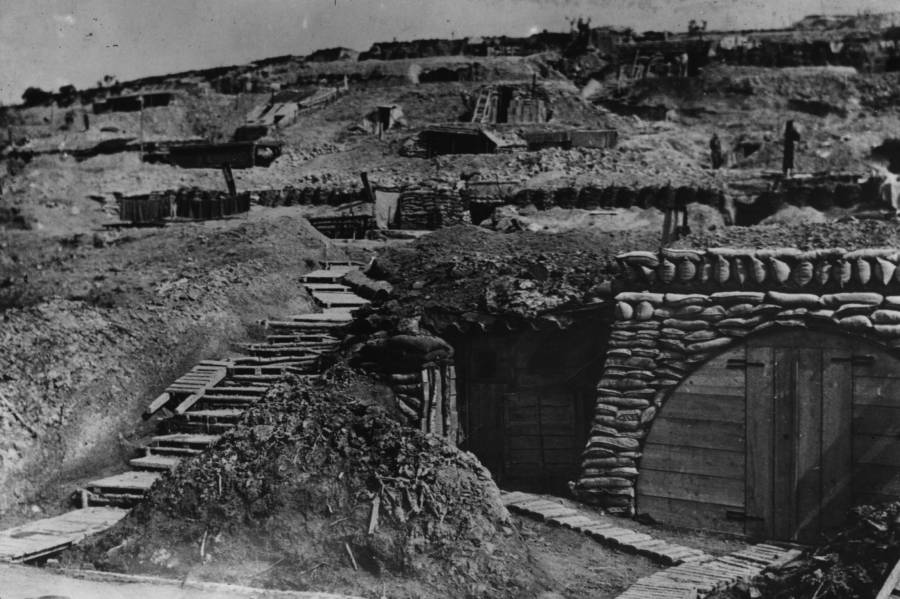


At the top of the tower is a rotating red and white "lantern of the dead", which shines on the battlefields at night. It was offered by an American benefactor, Anne Thornburn Van Buren, in 1927. The tower contains a bronze death-bell, weighing over 2 tonnes (2.0 long tons 2.2 short tons), called Bourdon de la Victoire, which is sounded at official ceremonies. The tower is 46 meters (151 ft) high and has a panoramic view of the battlefields. George Desvallières designed the stained glass windows. The architects of the ossuary were Léon Azéma, Max Edrei, and Jacques Hardy. The ossuary was officially inaugurated on 7 August 1932 by French President Albert Lebrun. Before leading the French army to victory at the Battle of the Pyramids on July 21, 1798, Napoleon Bonaparte rallied his troops by pointing to the distant. It was inaugurated in 1923 by Verdun veteran André Maginot, who would later approve work on the Maginot Line. In front of the monument, and sloping downhill, lies the largest single French military cemetery of the First World War with 16,142 graves. The battlefield of Verdun scarred with shell craters. In this ebook they are shown side by side in a single figure. His plan was not to capture the city, but simply to kill as many Frenchmen as possible, or to quote him, bleed the French army white. The families of the soldiers that are recognized here by name contributed for those individual plaques. In the source book some photographs are placed side by side on opposing pages to form a panorama. A few of the names are from fighting that took place in the area during World War II, as well as for veterans of the Indochina and Algerian Wars. On the inside of the ossuary building, the ceiling and walls are partly covered by plaques bearing names of French soldiers who died during the Battle of Verdun. Through small outside windows, the skeletal remains of at least 130,000 unidentified combatants of both nations can be seen filling up alcoves at the lower edge of the building. The ossuary is a memorial containing the remains of both French and German soldiers who died on the Verdun battlefield. ( December 2021) ( Learn how and when to remove this template message) Unsourced material may be challenged and removed. Please help improve this section by adding citations to reliable sources.


 0 kommentar(er)
0 kommentar(er)
